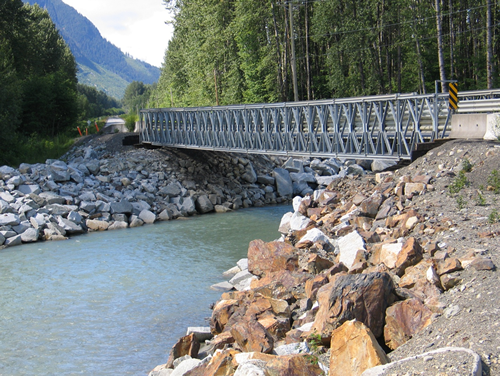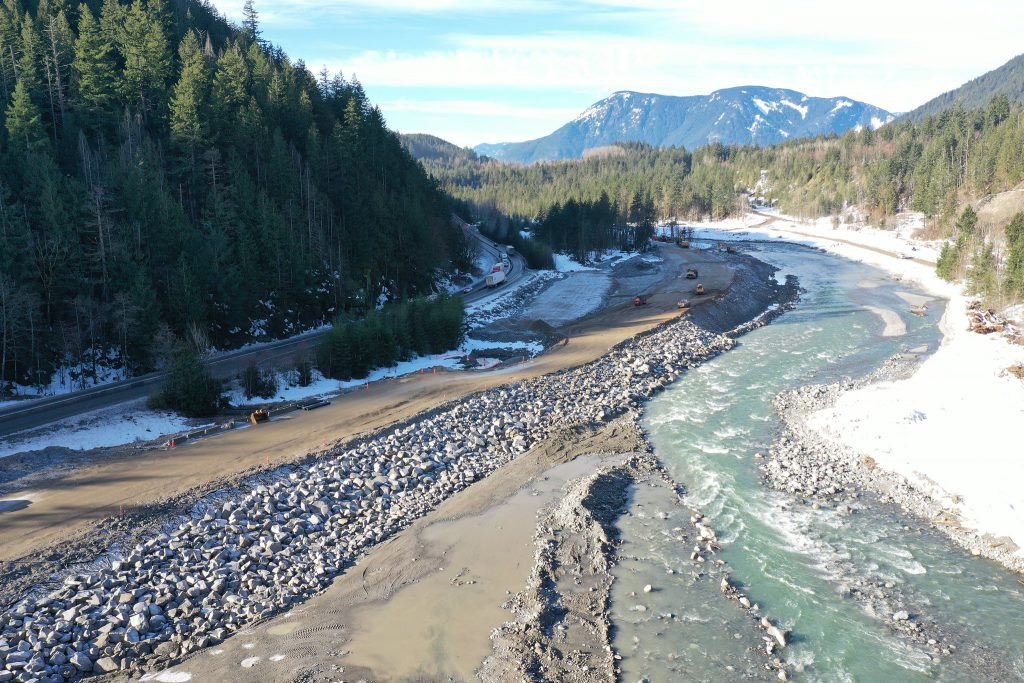
You might have seen it and thought it was “just a pile of rocks”. You’re right, it is a pile of rocks, but it is a pile of rocks with a purpose. Also known as rubble, shot rock or rock armour, we use this rock star to protect our coastlines, riverbeds, bridges and steep hills from erosion by water.
How does something as unassuming as a pile of rocks have such a big impact on erosion? When used for water erosion, rip rap absorbs and deflects the impact of water before it reaches the important stuff (i.e. bridge or a road). Simply put, when water energy is strong, the rip rap takes a hit for the team, leaving our bridges, roadways and shorelines to serve another day.
If you think that rip rap is just a brute force in erosion control, you are mistaken. Our sturdy friend has an intelligent side too. Gaps in rip rap trap and slow the flow of water, which also slows erosion. Larger rip rap “piles” are used to control large scale erosion and are interlocked to stabilize the pile, allowing it to stay in place for many years to come.

Rip rap also helps to create habitat for wildlife. When used along waterways, rip rap helps to support small marine animals; while dry land rip rap provides shelter to a variety of land loving plants and animals.
Do you know why the shape of the rock used as rip rap is important? Rough cut and angular rock are more effective at breaking down energy than rounded river rock and, while river rock may look nice, irregular rocks bind together more easily. Using large, irregular rocks as rip rap also helps recycle material created during blasting and other road building projects. So the next time you scramble over some rocks to get to the sea, or see small ferns and animals poking their heads out of “a pile of rocks” along the highway, you will know that those are no ordinary rocks; They are rocks that help stop the roll of erosion.
Hi
Are you familiar with Hwy 8? If so, we sure could use some ‘rip rap’ help at property 9710. I have puctures but dont see how to include them.
Hello Edith – thanks for connecting with us here. Please connect directly with our staff in your area to discuss. Here is their contact info:
Thompson Nicola District
#127 – 447 Columbia St.
Kamloops, BC V2C 2T3
250 828-4002
Hope this is helpful.
I appreciate learning and knowing these little bite size pieces of info regarding our highways and infrastructure. Thanks for taking the time to post!
We are so glad you find it informative! Have a great weekend and safe travels.
The Rock Star rip rac is fascinating information.
Thank you for the detailed description.
When hiking with my 8 yr old grandson l love pointing out interesting things.
We will enjoy chatting about
this.
Thanks for your comment, Peggy! This is why we create and share the content – to help educate folks on the why and how of what we do. 🙂 Safe travels.
Great info!!
The railways have been using a smaller grade of sharp rock called Ballast. Ballast is used for drainage from the track. It supports the track under the near 200lbs.ribbon steel rail that runs continuously for miles without a break. Some call it welded rail but it is flexible and seamless. It carries any number of trains on the C.N. and C.P tracks in the Fraser Canyon and the rest of North America. This picture with the far larger boulders has to hold up the highways and bridges. The railways know they will never ever tame the Fraser Canyon. The only far more dangerous railway was the Kettle Valley Railway owned by the C.P.R. at the Coquihalla Sumit. A half century or so later we find why the C.P.R. left when we see the the highway left in tatters.
Thanks for sharing, Bryan.
I found that info very interesting. Never knew that until now.
Glad to hear it, Paul!
Thanks for all you do.
Thank YOU for this kind feedback, Norrie. 🙂
heheeh